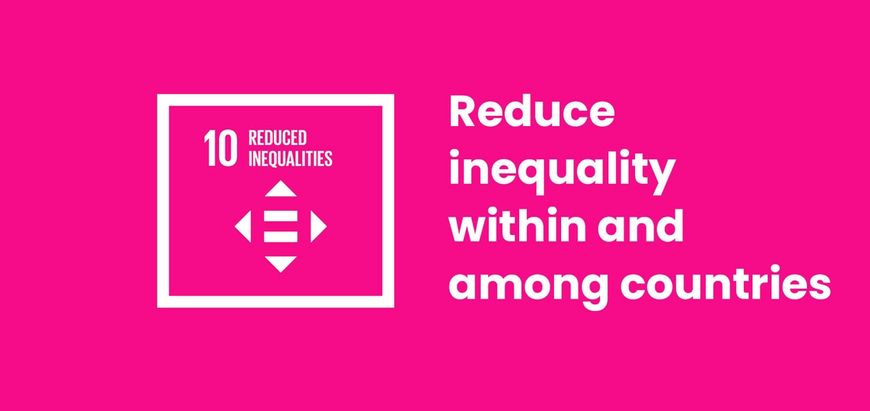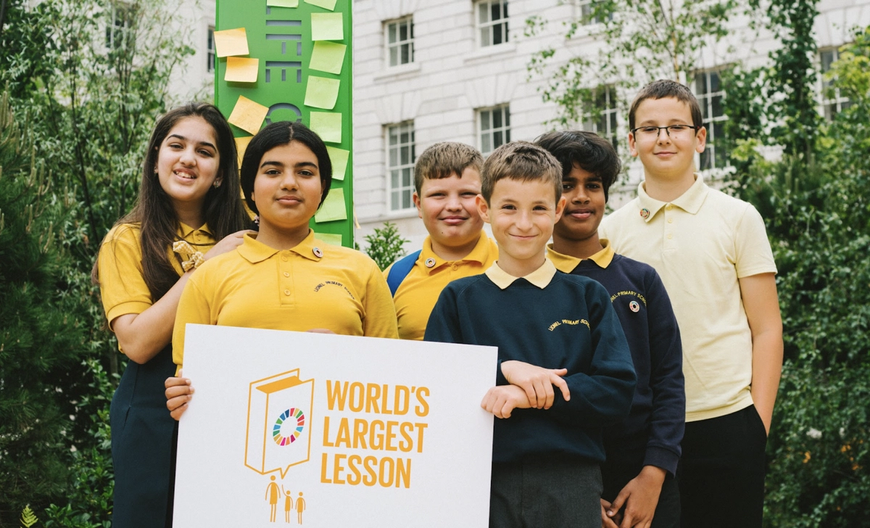Introduction to Goal 10 - Reduced Inequalities
Use this guide to introduce Global Goal 10, Reduced Inequalities to your students.

What is Global Goal 10?
Sustainable Development Goal 10: Reduced Inequality is one of the 17 Sustainable Development Goals established by the United Nations in 2015. You can find out more about the Goals in our introductory guide.
The full title of Goal 10 is: "Reduce inequality within and among countries". It has ten targets relating to inequality in all forms - from income and economic inequality and lack of representation in politics to discrimination based on gender, disability, race, and migration.
The UN describes Global Goal 10 as follows:
Too much of the world’s wealth and power is held by a very small group of people. This often leads to financial and social discrimination. In order for nations to flourish, equality and prosperity must be available to everyone - regardless of gender, race, religious beliefs or economic status.
Активности
Below are some ideas to help bring Goal 10 to life for your students. Активности су индивидуалне или представљају низ активностиву оквиру једне лекције.
Teacher’s guide to teaching Goal 10: Reduced Inequalities
Teacher’s guide to teaching Goal 10: Reduced Inequalities

Activity 1: Introducing Inequality
In this activity, students will be introduced to the concept of inequality.
Length - 10 mins
- Distribute a number of sweets / biscuits / stickers / counters unevenly. Some students should have a lot, some students have none. Keep the majority for yourself.
- Ask students “Is this fair?” Encourage students to discuss this as a class. Ask the students to discuss how they feel about the distribution they have.
- Explain to the students that you have the most because you are the oldest. Is that fair? What about if you gave the tallest children more than the shortest? Or all the boys had to give theirs to the girls?
- Use this example of inequalities to introduce the idea of social inequality. This definition might be useful: “a situation in which people are not equal because some groups have more opportunities, power, money, etc than others” (source: MacMillan dictionary)
Goal 10 is summarised in the following video:
Activity 2: The Impact Of Inequality
In this activity, students will think about inequality and the impact it has on individuals, their families, right through to the whole world.
Length - 30-40 mins
- Together, make a list of all of the different forms of inequality that students can think of. Then, in small groups, students should chose one form of inequality to focus on.
- Students should write down all of the impacts of this inequality that they can think of to create an impact chain. Guide students to think about the impact in this order:
- Individuals - what is the impact of the inequality on the individual?
- Their families - how does it then affect their family?
- Local community - what impact with this have on their local community?
- Whole country - how will this impact the whole country?
- The world - finally, what impact will this inequality have on the world?
- As an extension, they could also think about economic, social, political and environmental effects.
- When they are finished, find ways for students to share their work and reflect on what they’ve learned.

The activities are created by World's Largest Lesson